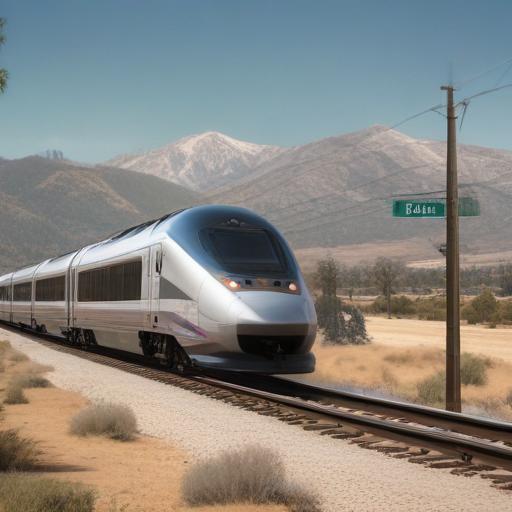The Trump administration’s recent announcement to terminate $4 billion in federal grants for California’s high-speed rail project has raised serious concerns about potential delays in the commencement of passenger operations. Analysts suggest that even a delay of up to a decade could be on the horizon due to funding shortages and ongoing challenges faced by the project.
California’s efforts to establish a high-speed train link between Los Angeles and San Francisco have faced multiple setbacks over its 17-year history, including scaling back its initial vision amid rising costs and construction delays. Originally estimated to transform travel between the state’s largest cities in about two hours and 40 minutes at a cost of $33 billion, the cost for the project has since ballooned, with current estimates suggesting it could reach up to $128 billion. The first segment in California’s Central Valley alone could end up costing $35 billion.
The California High-Speed Rail Authority had been making incremental progress, but the recent withdrawal of federal funding places the project at significant risk. State officials have stated their intent to continue relying on state funds, yet experts warn that without federal support, operational timelines may extend, with the potential for layoffs and project stalling.
In response to concerns regarding compliance and management issues, the Federal Railroad Administration highlighted nine instances of non-compliance with grant agreements and noted that there is no viable path to meet the projected deadlines. While the California High-Speed Rail Authority disputed these findings, they face a reality where funding and momentum are in jeopardy.
Despite the grim forecast, some advocates believe that the project remains crucial for California’s future. They argue that it represents an opportunity to enhance mobility and connectivity within the state’s economy while promoting low-carbon transportation alternatives. Proponents maintain that investments in public transportation could lead to improvements in the quality of life in California, countering narratives that highlight the project’s struggles.
In the face of political and financial hurdles, California must respond to the Trump administration’s notice within 30 days, which may involve legal action to challenge the funding cuts. Legal experts suggest that while the state’s political dynamics with the Trump administration could complicate its case, the fight to secure funding could shape the future of this ambitious infrastructure endeavor.
Overall, while the challenges are significant, the hopes for a resilient transportation network continue to motivate supporters, who believe it can transform California’s infrastructure and economy for the better.
